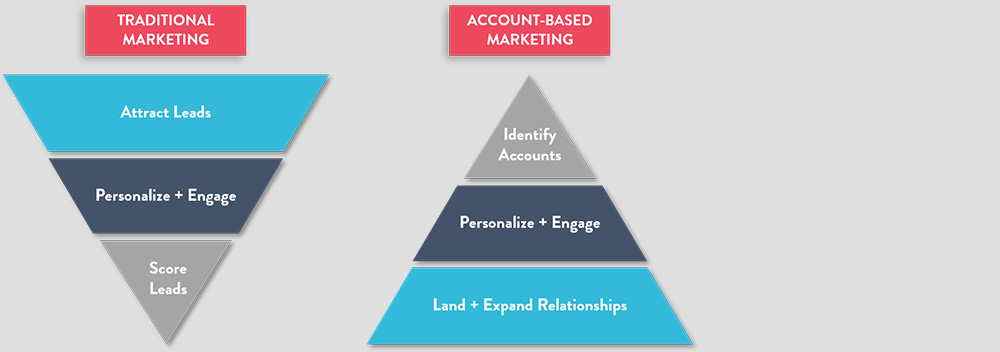Historically, B2B sales and marketing strategy has been based on the funnel model: awareness constitutes the wide end of the funnel, gradually narrowing down to consideration, then intent, then, finally, conversion (a sale).
However, the digital age has seen the increased adoption of account-based marketing (ABM), an approach in which sales and marketing teams work together to identify and target best-fit accounts within a given industry or market. In other words, the prospect becomes your market. This method is much more like using a focused laser rather than the traditional shotgun approach to generating leads for the funnel. It’s the “we want to do business with you, specifically – not just anybody” approach to sales and marketing.
ABM has many advantages over the traditional approach – true alignment between sales and marketing teams, better efficiencies of budgets, shorter sales cycles, and higher customer satisfaction rates – to name a few. But not every manufacturer has the resources or infrastructure to fully commit to an all-out ABM approach. That’s where the idea of a hybrid model comes in.
A hybrid approach still depends on the generation of leads via awareness through to conversion but takes some pages from the ABM model by concentrating those efforts on prospects that you WANT to do business with.
For instance, say you make a product used in processes across the aerospace, agricultural, and automotive industries. You advertise, send emails, and run public relations campaigns to all three to generate awareness and leads. After all, you’re happy to do business with all of them. However, your sales in agriculture and automotive tend to be one-offs based on price, with customers in these industries constantly changing suppliers. On the other hand, your aerospace customers tend to sign long-term contracts for your products in multiple locations – they’re not as focused on price as they are on quality, performance, and a trust-based relationship with their suppliers.
So, you weight your marketing budget more toward aerospace, creating content and making concerted efforts specific to that industry. You’re not spending more, mind you, you’re just allocating more of the same spend to those customers who pay a higher dividend. And, as you get to know the players within the aerospace industry, you further refine your efforts to those specific companies within aerospace that best match your notion of an ideal customer.
By using this hybrid method, manufacturers are still engaging in the traditional model of raising awareness about their products and services, but they’re also concentrating on the lucrative, “big ticket” customers who can truly help them grow.
Studio/D has many years of experience in using traditional, ABM, and mixed model marketing strategies to help our clients gain visibility and grow their markets. Ask us how we can help grow your business.
Studio/D is a full-service marketing communications firm working with mid-market industrial and manufacturing clients, together with companies that support the manufacturing ecosystem. We’re a team of “makers” who simplify complex communication challenges with messaging that engages and drives results. Learn more about us at StudioD.agency, or call our president, Scott Dieckgraefe at 314-200-2630.
